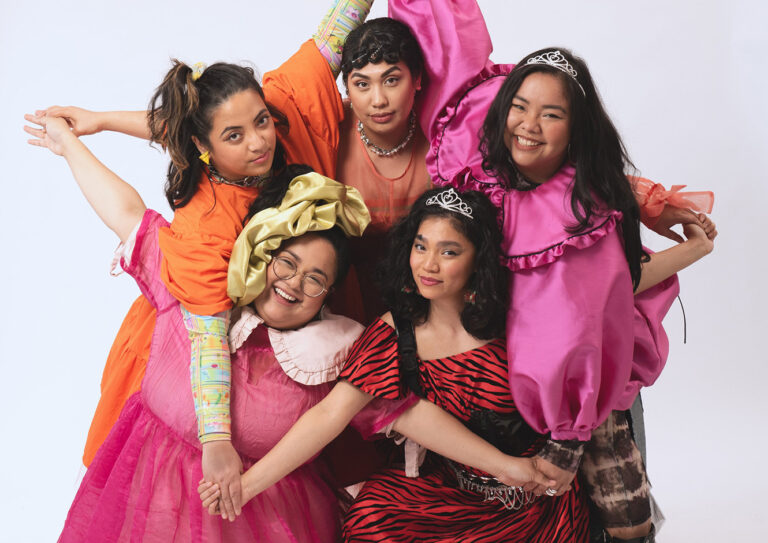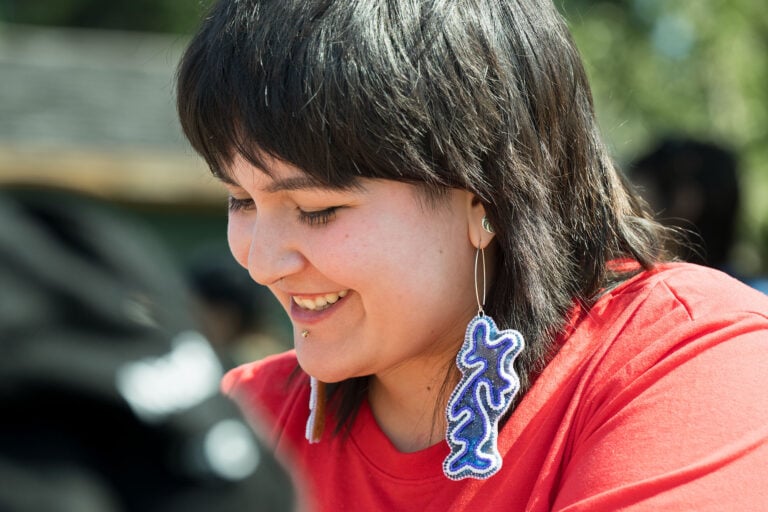Barrie Mowatt, founder, artistic director and president of the Vancouver Biennale, says it was a powerful piece, from conception to installation.
“It was a matter of creating a sense of trust and confidence in terms of what was going to occur here,” he says. “[Indigenous and Islamic] groups both came from a background of feeling disenfranchised and, in many cases, not heard. Not visible … so you had two diverse groups of individuals coming together, learning about each other’s cultures and histories, and being honest enough with one another and vulnerable enough to share some of those concerns.”
The rugs on display at YAC are the result of that collaboration and creation. Taken together, they explore Indigenous and Islamic histories, as well as questions of belonging, displacement, diaspora, land and identity. Both George and her partner, fellow weaver Skwetsimeltxw, Willard “Buddy” Joseph, say the experience allowed for dialogue and discussion around different issues of belonging.
“For me, that was really a very special day to work with [the Muslim artists], going forward with open hearts and open minds,” says Joseph. “Once we laid down the blankets, people prayed on them … it was a very poignant moment for me.”
That’s because weaving is ceremonial, says George. The first thing that’s done in ceremony (be that a wedding, memorial, or other life event) is to put weaving on the ground. The person responsible for the weaving is also responsible for weaving in protection and good energy. So it’s an emotional moment to see the work in use.
It was also a chance for George and Joseph to continue the work they’ve been doing, of educating people on weaving and teaching the spirituality and customs inherent in it. They’ve been doing it in schools and by way of books—George published Coast Salish Weaving in 2008—since 2004. This gave them another venue to continue that education.
“We’re able to explain our worldview through weaving,” says Joseph. To him, part of reconciliation includes projects like this and the consulting he recently did with the architects responsible for the Vancouver Art Gallery redesign—its intertwined copper exterior resembles woven fabric, a direct reference to Coast Salish blankets.
Their hope with the touring of Weaving Cultural Identities is that Canadians understand how sacred their weaving is and what it means to come together, with respect for each other’s cultures, traditions and customs, to work toward common goals.
The exhibit is open Monday to Friday, 10:00AM-5:00PM.





